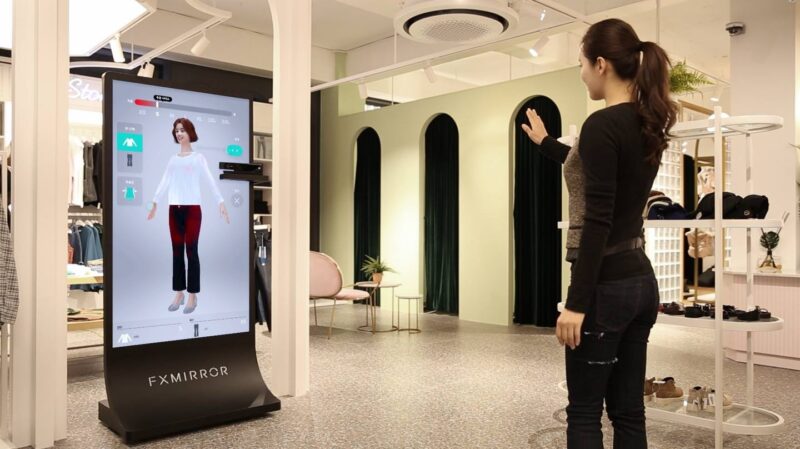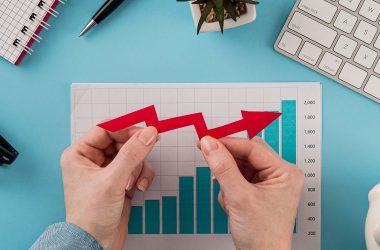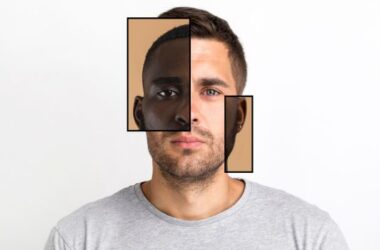Executive Summary:
From predicting trends to enhancing the shopping experience, AI in fashion is revolutionizing every aspect of the business. In this blog, we’ll explore how generative AI in fashion is reshaping the entire industry. In the ever-changing fashion industry, keeping up with trends and meeting consumer demands is essential for success. Thanks to advancements in technology, particularly AI, the landscape is transforming never before.
The Role of Generative AI in the Fashion Industry
Generative AI in fashion is playing a pivotal role in revolutionizing the industry. Let’s delve into how it’s impacting various aspects:
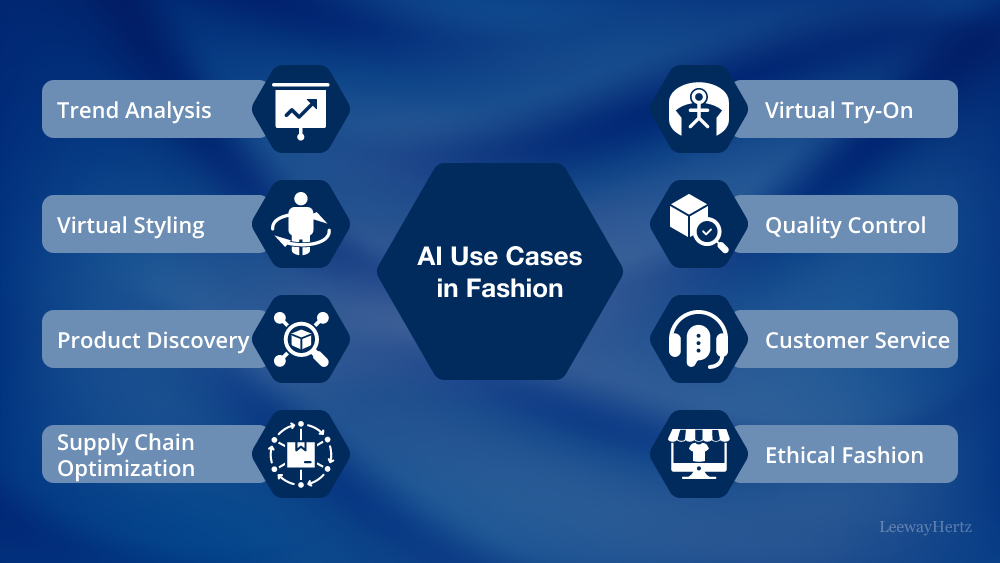
-
Predicting Trends
One of the most significant contributions of AI in the fashion industry is its ability to predict trends with remarkable accuracy. AI algorithms can identify emerging trends long before they hit the mainstream by analyzing vast amounts of data from social media, runway shows, and online shopping behavior. This predictive capability enables fashion brands to stay ahead of the curve and create products that resonate with consumers.
-
Optimizing Supply Chains
AI in fashion is streamlining supply chain management. By analyzing data on inventory levels, production capacity, and consumer demand, AI can optimize the entire supply chain process, minimizing wastage and reducing costs. Apparel detection solutions and apparel detection software are being used to automate inventory tracking and ensure accurate stock levels, leading to more efficient operations.
-
Customizing the Shopping Experience
Personalization is key in today’s retail landscape, and AI is enabling fashion brands to deliver tailored shopping experiences to their customers. Through machine learning algorithms, AI can analyze customer preferences, past purchases, and browsing behavior to recommend products that align with individual tastes. This level of customization enhances customer satisfaction and fosters brand loyalty.
-
Fighting Fake Products
Counterfeiting is a significant challenge in the fashion industry, costing brands billions of dollars in lost revenue each year. AI-powered solutions are helping combat this problem by identifying counterfeit products and protecting brands’ intellectual property rights. By analyzing product images and comparing them to authentic designs, apparel detection software can detect counterfeit items with a high degree of accuracy, safeguarding brand reputation and revenue.
-
Virtual Try-Ons – The AI-Driven Solution in Fashion Retail
With the rise of e-commerce, virtual try-ons have become a game-changer in the fashion retail sector. AI-powered virtual fitting rooms and AI Virtual Fitting Room Technology allow customers to try on clothing virtually, enabling them to visualize how different garments will look on their bodies before making a purchase. This technology not only enhances the online shopping experience but also reduces the likelihood of returns, ultimately improving the bottom line for fashion brands. By utilizing AI Virtual Fitting Rooms, customers can conveniently Find Clothing By Picture and virtually try them on, eliminating the need for physical fitting rooms and enhancing the overall shopping journey.
-
AI-Powered Recommendations
AI algorithms are powering recommendation engines on e-commerce platforms, helping customers discover new products based on their preferences and browsing history. By analyzing data on customer behavior and product attributes, AI can generate personalized recommendations that drive sales and increase customer engagement. Whether it’s suggesting complementary items or highlighting trending styles, AI-powered recommendations are reshaping the way consumers discover and shop for fashion online.
-
AI in Fashion Marketing
In addition to transforming the retail experience, AI is also revolutionizing fashion marketing. Machine learning algorithms are being used to analyze consumer data and optimize marketing campaigns for maximum impact. By segmenting audiences, predicting purchase behavior, and identifying the most effective channels, AI enables fashion brands to deliver targeted and relevant marketing messages to their customers, driving engagement and conversion rates.
-
ChatGPT in Fashion
ChatGPT, a state-of-the-art language model developed by OpenAI, is making waves in the fashion industry. From providing style recommendations to answering customer queries, ChatGPT is enhancing the shopping experience for fashion enthusiasts around the world. Its natural language processing capabilities enable fashion brands to engage with customers in real time, providing personalized assistance and driving sales.
-
Ethical Considerations on the Use of AI in the Fashion Industry
While AI offers numerous benefits to the fashion industry, it also raises important ethical considerations. Issues such as data privacy, algorithmic bias, and labor displacement need to be carefully addressed to ensure that AI technologies are deployed responsibly and ethically. Fashion brands must prioritize transparency, fairness, and accountability in their use of AI to mitigate potential risks and uphold ethical standards.
How AI Is Moving Forward in the Fashion Industry
Once reliant on intuition and trend forecasting, the fashion industry has experienced a profound transformation with the use of AI in fashion.
Customers now have access to AI clothing detection technology, which provides virtual trial rooms. Through these virtual rooms, customers can see how a particular garment will look on them without the need to physically try it on.
This saves time and effort and minimizes the chance of receiving ill-fitting clothes. AI also assists fashion brands in optimizing inventory management. It adapts to customer buying patterns and predicts demand, enabling brands to maintain optimal stock levels.
It boosts business profits by suggesting the ideal size and fit for every customer. This considers factors like body type, personal preferences, and previous purchases. Here’s an analysis of the progression of AI within the fashion industry.
- Expanding design capabilities: The use of AI in fashion allows for the creation of unique garment designs based on customer preferences and market trends without human designers.
- Enhanced customer experience: Virtual trial rooms, personalized recommendations, and optimized inventory management allow customers to enjoy a seamless shopping experience.
- Efficient supply chain management: AI helps brands identify gaps in their supply chain and streamline production processes by predicting demand and optimizing inventory levels.
- Sustainable fashion practices: AI can also help promote sustainable fashion by recommending eco-friendly materials and reducing waste through accurate demand forecasting.
Key Challenges Addressed by AI in Fashion
By embracing AI and all its different uses, fashion businesses open doors to innovation and tailor-made experiences and set themselves on a path to success in the future. However, like any technology, AI faces challenges that must be addressed. Here are some key challenges that AI in fashion is working towards resolving.
1. Data Bias
AI algorithms learn and operate based on the data they are fed. If this data is biased or lacks diversity, it can perpetuate societal biases and lead to issues of inclusivity and representation in fashion. because an AI algorithm trained on a limited range of body types may face challenges in creating clothing that accommodates a variety of body shapes and sizes.
Solution
- Embrace diversity in data: Gather information that represents a wide range of consumers, including various ethnicities, body types, and genders.
- Collaborate with humans: Involve people in the design and development of AI algorithms to detect and address any biases that may arise.
- Regularly review and update datasets: Keep a close eye on datasets, making sure they stay accurate and unbiased over time through consistent monitoring and updates.
2. Privacy Concerns
As AI in fashion retail becomes more prevalent, concerns about consumer privacy emerge due to the collection and analysis of extensive personal data, including purchase history and browsing behavior. Businesses must prioritize transparency and ethical practices in how they collect and use this data.
Solution
- Be upfront about data collection: Clearly explain to customers what data is collected, how it’s used, and their rights regarding their information.
- Secure customer data: Use strong security measures to protect and anonymize customer data, keeping it safe from unauthorized access.
- Follow privacy regulations: Adhere to laws like GDPR and CCPA, ensuring that data practices align with legal requirements and industry standards.
3. Integration with Human Creativity
The growing use of AI in fashion raises concerns that it could stifle human creativity and result in a uniformity of design. To address this, businesses must strike a balance between AI technology and human input to preserve originality and foster innovation.
Solution
- Emphasize collaboration over substitution: See AI as a tool to enhance human creativity, not replace it entirely.
- Value human input in the design process: Utilize AI for tasks like data analysis and trend prediction, while leaving creative decisions to human designers who bring unique insights and perspectives.
- Promote innovation and exploration: Create environments where designers can experiment with AI tools, encouraging them to explore new creative avenues while maintaining their artistic freedom.
4. Cost of Implementation
Implementing AI technology can be expensive, particularly for smaller fashion brands. This can create a barrier to entry and limit the potential benefits for the industry as a whole.
Solution
- Affordable AI solutions: Supporting the creation of cost-effective AI tools tailored to the needs of smaller businesses, making them more accessible.
- Collaborative efforts: Encouraging businesses to collaborate and share resources and knowledge about implementing AI, enabling smaller players to leverage expertise efficiently.
- Government and industry backing: We are seeking support from government and industry bodies to provide resources and expertise and facilitate AI adoption for smaller companies in the fashion sector.
Real-Life Examples of AI in Fashion:
Transforming Famous Fashion Brands
The integration of artificial intelligence (AI) in the fashion industry is not just theoretical; it’s happening right now, and some of the world’s most renowned fashion brands are leading the charge. Let’s explore how AI has transformed these famous fashion brands and revolutionized the way they operate:

Tommy Hilfiger, a household name in fashion, utilizes AI in various aspects of its business
- Personalized Recommendations: Tommy Hilfiger utilizes AI algorithms to offer personalized recommendations to customers based on their browsing history, preferences, and purchase behavior. This tailored approach enhances the shopping experience and increases customer satisfaction.
- Inventory Management: AI-powered inventory management systems help Tommy Hilfiger optimize stock levels, reduce wastage, and ensure that popular items are always in stock, leading to fewer out-of-stock situations and happier customers.
- Sustainability Efforts: AI is used to analyze data related to sustainability initiatives, such as sourcing eco-friendly materials and reducing carbon emissions in the supply chain. By leveraging AI insights, Tommy Hilfiger can make informed decisions that resonate with environmentally conscious consumers.
- Enhanced Shopping Experiences: AI technology is integrated into Tommy Hilfiger’s online and offline stores to create immersive shopping experiences. From virtual try-ons to augmented reality (AR) experiences, AI-driven innovations delight customers and differentiate the brand from its competitors

As a top sports brand, Adidas is at the forefront of technological innovation, leveraging AI to streamline operations and deliver personalized experiences to customers.
- Optimized Shipping: Adidas leverages AI algorithms to optimize shipping routes, minimize delivery times, and enhance the efficiency of its logistics operations. This results in faster delivery of custom-designed shoes to customers, leading to increased satisfaction and loyalty.
- Personalization and Engagement: AI-powered recommendation engines analyze customer data to deliver personalized product recommendations and marketing messages. By tailoring content to individual preferences, Adidas enhances engagement and strengthens customer relationships.
- Automated Customer Service: AI chatbots are deployed on Adidas’ website and social media channels to provide real-time customer support. These chatbots can answer common queries, assist with order tracking, and resolve issues promptly, improving the overall customer experience.
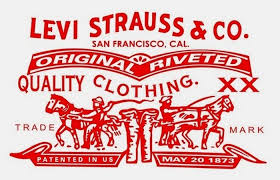
In a bold move toward diversity and inclusion, Levi Strauss has announced plans to incorporate AI-generated models into its marketing initiatives.
- Diversity and Inclusion: Levi Strauss uses AI-generated models to promote diversity and inclusivity in its marketing campaigns. By creating digital models that represent a diverse range of ages, skin tones, and body types, the brand demonstrates its commitment to inclusivity and resonates with a broader audience.
- Innovative Marketing: The use of AI-generated models and digital avatars in marketing campaigns allows Levi Strauss to stand out in a crowded marketplace and capture the attention of tech-savvy consumers. This innovative approach enhances brand perception and drives engagement.
- Ethical Considerations: While embracing AI technology, Levi Strauss remains mindful of ethical considerations and ensures that AI models are used responsibly and in alignment with the brand’s values. This commitment to ethical AI practices enhances trust and credibility among customers.

Balmain, a prestigious fashion house, has embraced AI technology in its Virtual Army campaign, which features virtual models and immersive virtual showrooms.
- Virtual Models and Showrooms: Balmain’s Virtual Army campaign features virtual models and immersive virtual showrooms, allowing customers to experience the brand’s collections in a digital environment. This innovative use of AI technology enhances brand engagement and creates unique shopping experiences.
- NFTs and Virtual Fashion: Balmain’s involvement in producing NFTs and virtual showrooms demonstrates its forward-thinking approach to technology and creativity. By embracing digital innovation, Balmain stays at the forefront of trends and maintains relevance in an increasingly digital world.

Partnering with Microsoft, luxury menswear brand Zegna has launched an updated version of its ZegnaX system, leveraging AI to personalize the shopping experience for customers.
- Personalized Shopping Experience: Zegna’s AI-powered ZegnaX system offers personalized shopping experiences by analyzing customer data and preferences. From recommending tailored clothing combinations to providing virtual try-ons, Zegna enhances the online shopping journey and meets the individual needs of its customers.
- 360-Degree Views: AI technology enables Zegna to offer 360-degree views of clothing combinations, allowing customers to explore products from every angle before making a purchase decision. This immersive experience increases customer confidence and reduces the likelihood of returns.
- Continued Innovation: Zegna’s collaboration with Microsoft and ongoing exploration of AI applications in fashion underscore its commitment to innovation and technology-driven growth. By staying at the forefront of AI advancements, Zegna maintains a competitive edge and drives customer satisfaction.
AI Technologies and Techniques in Fashion
In fashion, AI is changing everything – from how we design and make clothes to how we reach customers. By using machine learning and data analysis, brands understand shoppers better, run smoother operations, and get more creative. This isn’t just a fad; it’s a big shift that’s reshaping fashion. AI helps solve old problems and brings exciting new chances for innovation and success. Here are some of the key AI technologies and techniques used in fashion.
1. Computer Vision
Computer vision is a technology that uses machine learning algorithms to analyze and understand visual data, such as images or videos. In fashion, computer vision allows for faster and more accurate product categorization, identification of trends, and visual search capabilities for online shopping.
2. Natural Language Processing (NLP)
NLP is a branch of AI that enables computers to understand, interpret and generate human language. In fashion, NLP is used for tasks like sentiment analysis of customer reviews, chatbots for customer service, and generating product descriptions.
3. Generative Adversarial Networks (GANs)
GANs are a type of machine learning technology that involves two competing neural networks – a generator and a discriminator – to create new data based on existing data. In fashion, GANs can be used for tasks like generating new designs based on existing ones or creating virtual try-on experiences.
4. 3D Body Scanning
Using AI-powered body scanning technology, brands can capture precise measurements of customers’ bodies, enabling them to create custom-fit clothing and improve sizing accuracy. This technology also has potential applications in virtual try-on experiences.
5. Predictive Analytics
Predictive analytics uses AI algorithms to analyze data and make predictions about future outcomes. In fashion, this can be used for demand forecasting, inventory management, and personalized product recommendations based on individual customer preferences.
Folio3 AI is your best partner in the Fashion industry
If any business or fashion brand is looking to make its customer experience the best. Folio3AI apparel detection solution is a top choice. With its advanced computer vision technology, it offers features like visual search, recommendation systems, and automated product tagging.
Our team of experts is proficient in integrating image recognition capabilities into your e-commerce application. Our services offer an effortless shopping experience that incorporates advanced features like voice control and augmented reality into your app. So, contact us today to get started on your apparel detection solution!
Conclusion
Artificial intelligence in fashion is not just a buzzword; it’s a game-changer that is reshaping the entire industry. From predicting trends and enhancing supply chain management to revolutionizing the shopping experience, AI is driving innovation at every level.
Through the real-life examples of renowned fashion brands like Tommy Hilfiger, Adidas, Levi Strauss, Balmain, and Zegna, we’ve seen how AI is being used in unique and impactful ways to optimize operations, meet customer demands, and drive business growth.
These brands are leveraging AI to offer personalized recommendations, streamline logistics, promote diversity and inclusion, and create immersive shopping experiences.
However, it’s essential to approach AI deployment with caution and consideration for ethical implications. By embracing AI responsibly, the fashion industry can unlock its full potential and pave the way for a more innovative and sustainable future.

Dawood is a digital marketing pro and AI/ML enthusiast. His blogs on Folio3 AI are a blend of marketing and tech brilliance. Dawood’s knack for making AI engaging for users sets his content apart, offering a unique and insightful take on the dynamic intersection of marketing and cutting-edge technology.




